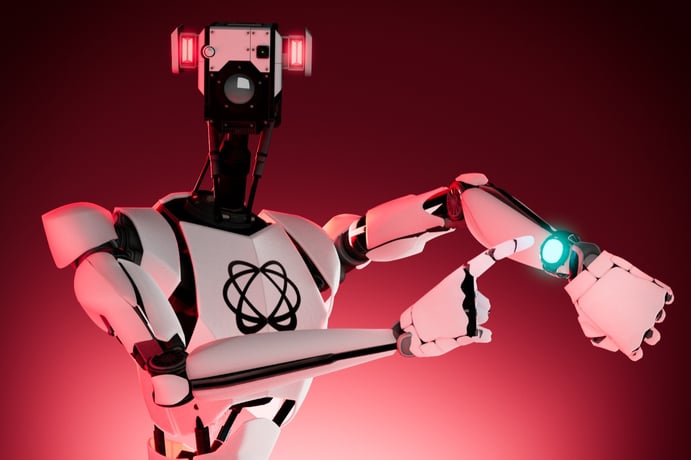Since VR (virtual reality) technology has been around for quite some time now, it's probably safe to say most of the world is familiar with the concept.
With the excitement bustling around the development of the metaverse, there’s been a rise in interest in the use of virtual studios as well as AR (augmented reality), XR (extended reality), and MR (mixed reality). In fact, many established brands have already started integrating AR into their products and services.
However, despite being a technology that originated decades ago, it is still quite common to confuse ‘virtual reality’ with virtual studios, augmented, extended, and/or mixed reality. The reality (no pun intended) is that these concepts are pretty dissimilar. There’s a lot to unpack but this quick start guide should help clarify a few things.
It’s time for a reality check.

Augmented Reality
One of the biggest tech trends is augmented reality (AR), and it is only growing as more smartphones, and other devices become AR-ready. AR lets us view the world around us — people walking their dogs, cars driving past, boats in a harbor — with a digital overlay. In augmented reality productions, a virtual element is inserted into a three-dimensional real-world setting.
An excellent example of this is when the Carolina Panthers played the New York Jets during the 2021 NFL season opener. Fans at home watched as a virtually created 50-foot panther lept around the stadium and destroyed the Jets' flag on live TV. Attendees inside Bank of America Stadium were able to watch the action unfold in convincing detail on the Jumbotron.
Virtual Studios
Virtual studios, sometimes referred to as “green screen productions”, are one of the more common forms of virtual production. By keying out the green screen around the talent, the virtual environment can be controlled and manipulated in real-time to have greater relevance to the content while remaining visually interesting. This gives producers total control over what kind of contextual information and visual content the talent is immersed in for more robust storytelling.
VideoReport Canaria's daily prime-time weather show, 'Una Hora Menos', uses AR maps in their virtual studios to bring a clearer understanding of current weather conditions to their audiences. With 'Una Hora Menos', they decided to move away from traditional talk-show production sets with expensive LED screen displays and changing stage fixtures and furniture, upgrading from a small and costly set with limited-stage resources and a single camera operation to a versatile and multi-camera system operation studio that can produce endless stage scenarios to better convey news reporting with creative storytelling.
Extended Reality
Extended reality is most commonly used to describe the use of large LED volumes to create virtual environments which live talent can interact with. The key to pulling this off is the relationship between the position and movement of the camera and what is displayed on the LED volume.
Think of a camera within a room, pointing out of the window, what is within the field of view of the camera outside of the window will depend on the camera's position within the room. The same is true for extended reality environments – the engine compositing the virtual environment receives data on the position of the camera and what is shown on the LED volume changes accordingly.
China’s CCTV broadcasted a two-hour television gala dedicated to China’s renowned Consumer Rights Day, designed to inform the general public on consumer habits and business practices from major brands. The variation of content and mood in the Consumer Rights Day’s show meant that physical sets would restrict the TV station’s options when conducting a live broadcast.
To transform the show into an immersive and visually stunning experience, CCTV installed a giant LED wall to dazzle viewers with incredible graphics powered by the Pixotope engine. Throughout the broadcast, the presenters were surrounded by LED screens, which displayed logos, CG graphics, and animation.
Mixed Reality
Mixed reality is simply a mix of any and all of the above virtual production techniques. AR or broadcast graphics elements could easily be added to a production created in an LED volume/XR or a virtual studio. Or a virtual studio set might pull in XR techniques for a better end result — for example, a green screen floor and LED volume walls.
French broadcaster TF1 presented original and engaging live coverage of the French municipal elections by making their newsroom appear as stationed next to the local town hall created digitally from photographs, extruded to add depth. The completed scene was then loaded into Pixotope, ready to be rendered out in real-time from the viewpoint of a virtual camera that accurately tracked the position and angle of the newsroom camera which seamlessly drifted between the newsroom and town hall.
Augmented reality graphic panels were also added to present election details such as information about the candidates. Reflection maps and post-effects such as bloom on bright lights added realism.
Want to learn more?
Schedule a demo with us if you want to learn more about VR, AR, and MR. We will help you better understand how these technologies work and – more importantly – how you can apply them to your next project.

COMMENTS